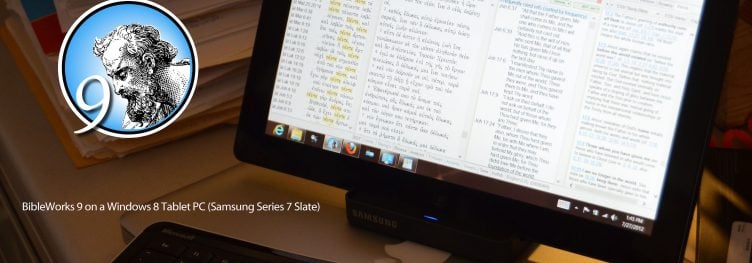In the second installment of my BW9 review (see pt. 1), I want to focus on how BibleWorks performs on the Mac. Yes, natively on a Mac.
Now if you happily use Windows (on PC or Mac), great. What follows below is not applicable to your setup.
This is one of the most important new features for me as a Mac user. In fact, the primary reason I have used BibleWorks less than I used to over the past few years is because it required loading virtualization software (though I must say it performed quite well this way).
For $6, BibleWorks will give you the necessary unlock code for the Mac installer. Of course, you must purchase or upgrade to BW9 if you do not already own it.
The installation process was simple, and very similar to installation on a PC (requiring three DVD discs). The program interface is also the same as the Windows version, which is nice.
Functionality and Speed
BibleWorks estimates 98% functionality in this Mac native format, and my experience supports that estimate. So far, I have only experienced one minor glitch: When an external display is disconnected (e.g., when the Mac ‘sleeps’) and reconnected, the program continues to run but the window disappears, requiring me to quit the program and re-open. It appears that the window ‘hides’ behind one display and must be dragged to the other.
I attempted a number of common tasks that I do in my research, and all performed quickly and successfully. BibleWorks has a list of limitations here, though it appears outdated since a number of these issues work now (I tested a few).
Regarding speed, BibleWorks says the native Mac version performs slightly slower than using virtualization software.
On a modern Mac with an Intel processor, it is slightly slower than the virtualized options (e.g. a word search might take a 1/5 of a second instead of a 1/20 of a second).
On my mac, I hardly notice any difference, and the speed remains faster than my eyes, hands, and mind run (thus if it is slower, I have yet to experience a practical difference in the speed). Below I share a one minute video showing performance on my Mac. (Note: I have a high end MBPro 16GB RAM and SSD, running OSX Mavericks 9.1).
So how does it work?
The native Mac version of BibleWorks 9 runs on OS X using customized compatibility libraries (WINE) by CodeWeavers. It runs directly on OS X without a virtual machine or machine instruction emulation. The underlying technology uses WINE and xQuartz libraries.
Overall, then, I am pleasantly surprised at the compatibility of BW9 on the Mac OS and anticipate this will only improve as BibleWorks’ developers continue to work on this.
In my next post, I will talk more specifically about features in BW9 applicable to all potential users (Mac Or PC).

[…] BibleWorks 9: On. A. Mac. […]
[…] Part 2 […]
[…] I said in the intro (see also pt 2), I have been upgraded to BibleWorks 9 from BW8. In this post I want to highlight some of the […]
[…] is Part 4. See Part 1, Part 2, and Part […]